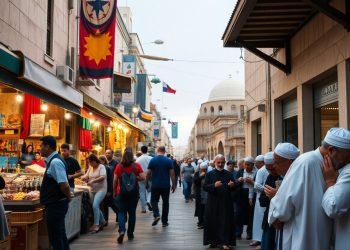Thousands of Israelis are back on the streets, four months after the October 7 Hamas attack and the war in Gaza halted historic demonstrations against the Netanyahu government’s plan to overhaul the judiciary.
Joining host Allison Kaplan Sommer on the Haaretz Podcast, reporter Linda Dayan explains how the protest movement has reemerged and how wartime demonstrations differ.
While the current wave of protests began with vigils and rallies for the hostages’ return, “as the objectives of the war got a little bit muddier [and] military casualties started to mount, we started to see that the hostages weren’t coming back and that we didn’t have a deal on the table to bring them back – we started to get more political anti-government protests demanding ‘elections now,'” Dayan says.
These two movements – one for bringing the hostages home and the other consisting of anti-government action – “are being held concurrently in two separate locations in Tel Aviv.”
Along with Dayan, Moran Zer Katzenstein, leader of Bonot Alternativa, the women’s rights organization whose “Handmaid’s Tale”-inspired costumes became a symbol of the pro-democracy protests last year, explains why her group has returned to the streets despite calls for unity in wartime.
“We have to say what we are thinking about this government,” asserts Zer Katzenstein. “We don’t hesitate to say that there is no strategy.”
As the far-right governing coalition members headlined a conference with the “horrifying” goal of resettling Gaza, “they are doing whatever they want. They don’t care who they are harming,” she tells the podcast.










